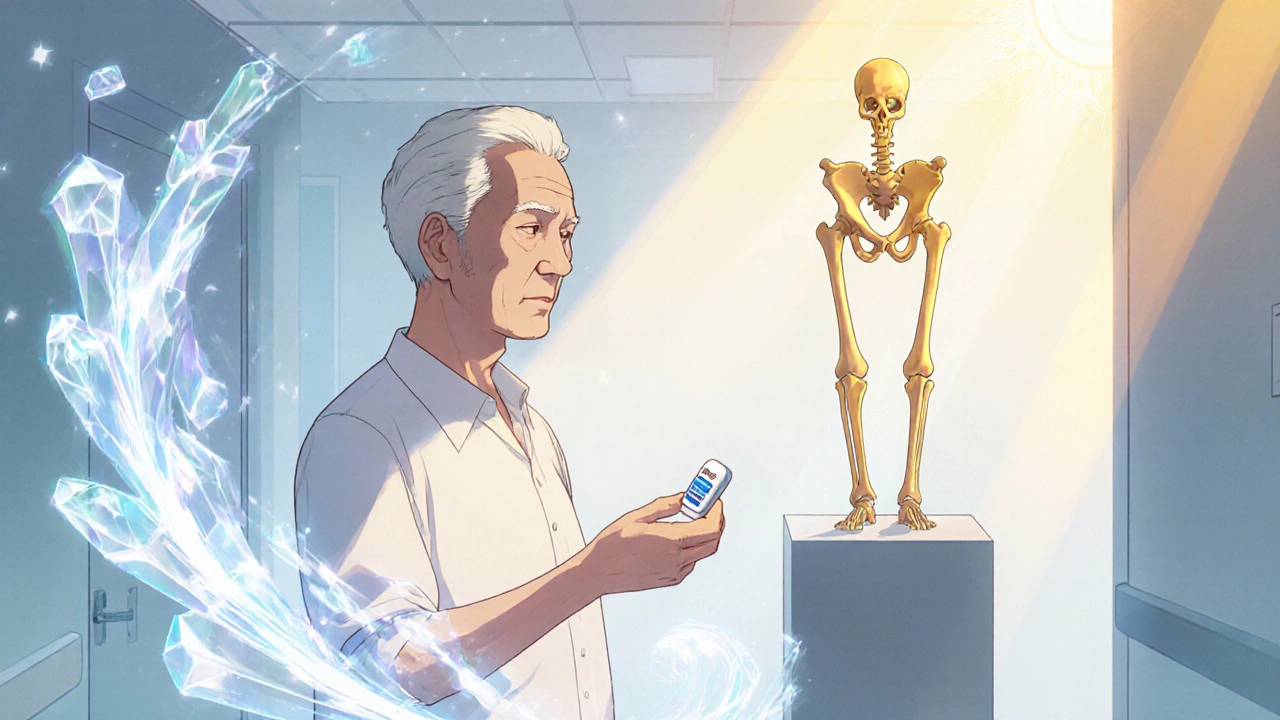Why Calcium and Vitamin D Matter When You’re on Alendronate
Learn why calcium and vitamin D are essential when taking alendronate, how to schedule supplements, choose the right products, and avoid common pitfalls for stronger bones.
Read moreWhen dealing with osteoporosis treatment, the set of medical, nutritional, and lifestyle steps aimed at strengthening weak bones. Also known as bone health therapy, it targets the loss of bone density that leads to fractures. Bisphosphonates, drugs such as alendronate and risedronate that slow bone breakdown are often the first line, while Denosumab, a monoclonal antibody that cuts down bone resorption offers a powerful alternative for those who can’t tolerate pills. Bone mineral density (BMD) test, a scan that measures bone strength and tracks treatment response completes the picture. In short, osteoporosis treatment encompasses medication, monitoring, and lifestyle changes; it requires regular testing; and it benefits from a balanced diet and exercise.
The drug arm of osteoporosis treatment is diverse. Bisphosphonates work by binding to bone surface and inhibiting osteoclasts, which reduces the rate at which bone is broken down. Typical doses are weekly or monthly tablets, and side effects can include mild stomach upset or rare jaw issues. Denosumab is injected under the skin every six months and offers a steady drop in bone turnover markers, making it a good fit for patients with kidney problems. For people with very low bone density, anabolic agents like teriparatide stimulate new bone formation but require daily injections and close monitoring. Each option has its own dosing schedule, safety profile, and cost, so doctors match the drug to the patient’s health status, fracture risk, and lifestyle.
Beyond prescription meds, supplements act as the nutritional backbone of therapy. Calcium provides the raw material for bone matrix, and most adults need 1,000‑1,200 mg daily from food or pills. Vitamin D is essential for calcium absorption; a blood level of 30 ng/mL or higher is the typical target, which often means 800‑2,000 IU of vitamin D3 per day. Magnesium and vitamin K2 are gaining attention because they help regulate mineral deposition. When you combine these nutrients with the right medication, the overall effect on bone strength is markedly higher than any single component alone.
Exercise and everyday habits round out the treatment puzzle. Weight‑bearing activities—like brisk walking, dancing, or light resistance training—signal the body to lay down more bone. Even simple home routines with dumbbells or resistance bands can boost bone density when done consistently. Smoking, excessive alcohol, and a sedentary lifestyle accelerate bone loss, so quitting smoking and limiting alcohol to moderate levels (up to one drink a day for women, two for men) are crucial steps. Regular BMD tests every 1‑2 years give feedback on how well the plan is working and help clinicians tweak doses or switch drugs if needed.
Putting it all together, an effective osteoporosis treatment plan blends the right medication, adequate calcium and vitamin D, regular physical activity, and ongoing monitoring through BMD scans. Patients who stick to this multi‑layered approach see fewer fractures and better quality of life. Below you’ll find articles that dive deeper into each of these pieces—drug comparisons, supplement guides, exercise tips, and monitoring strategies—so you can build a plan that fits your needs.

Learn why calcium and vitamin D are essential when taking alendronate, how to schedule supplements, choose the right products, and avoid common pitfalls for stronger bones.
Read more